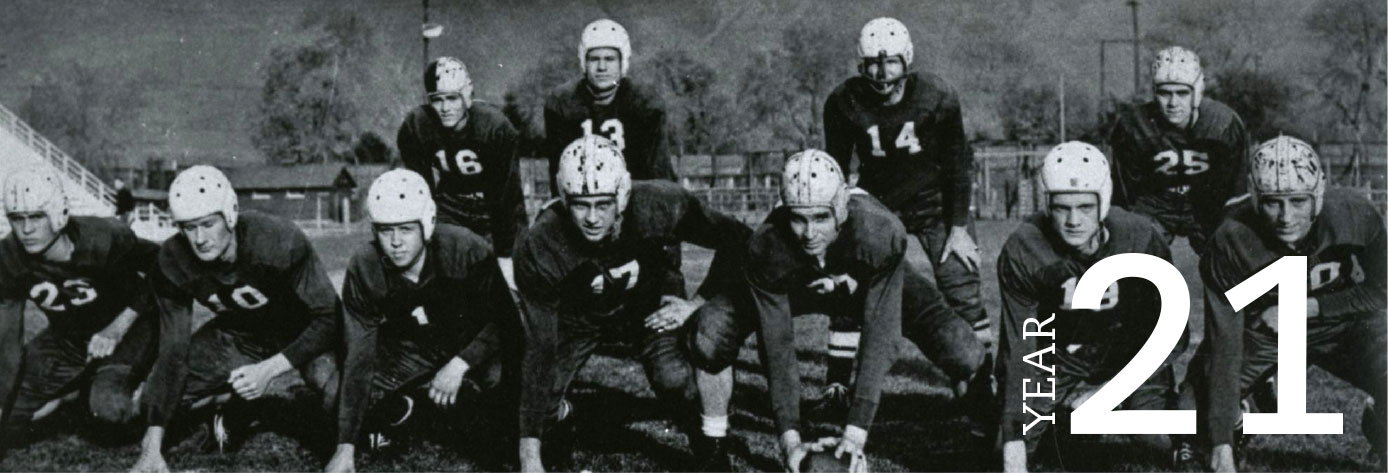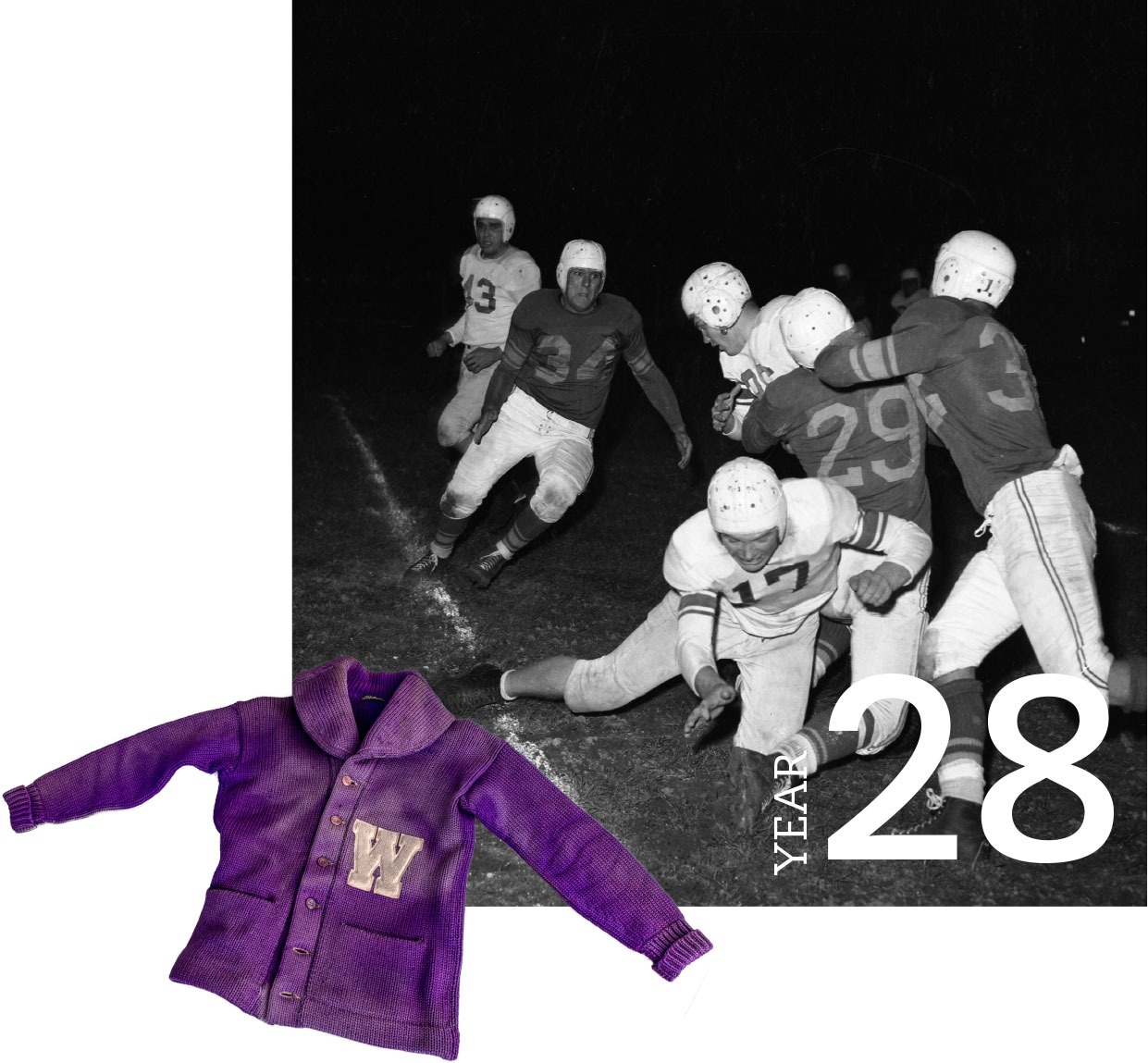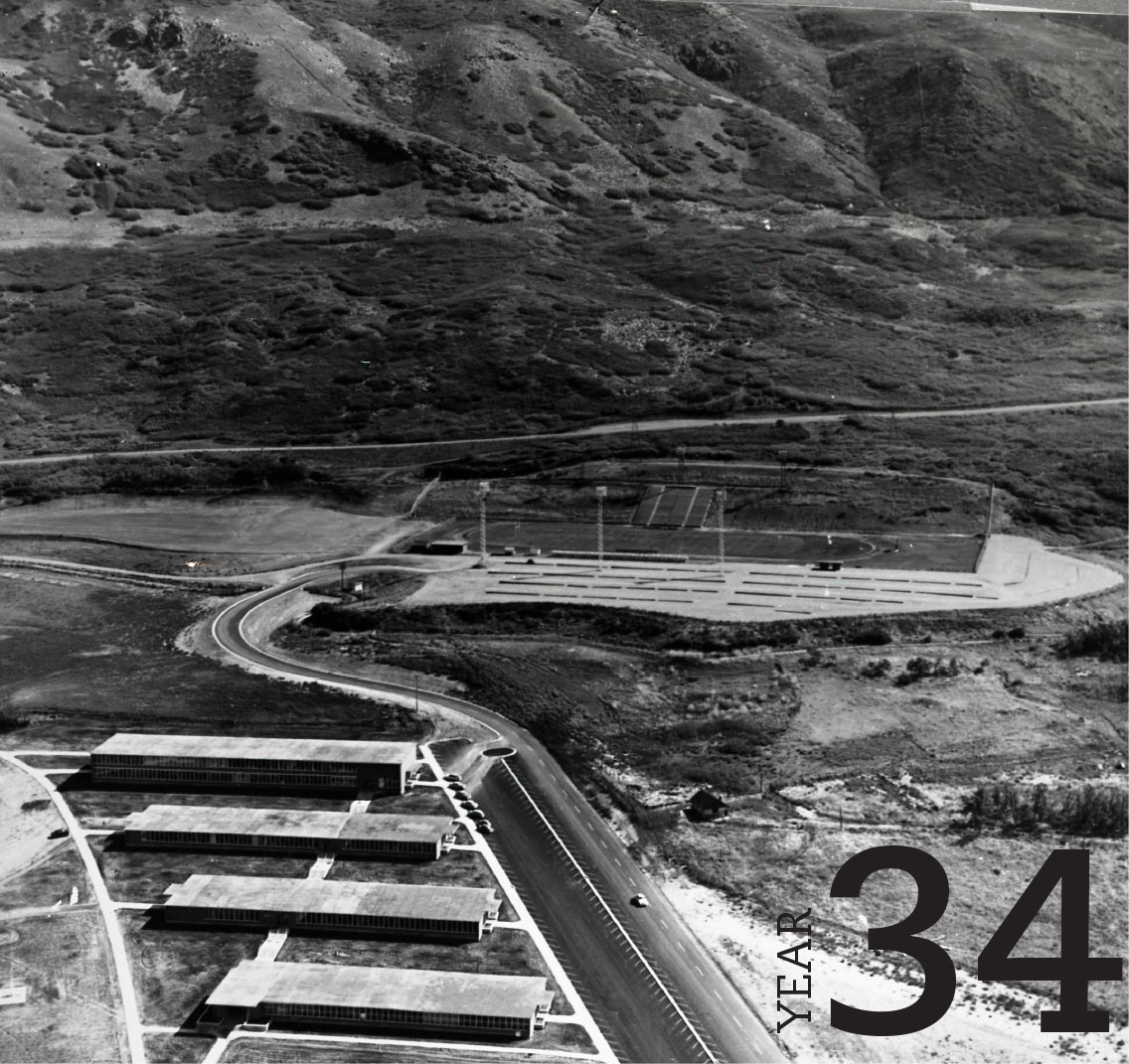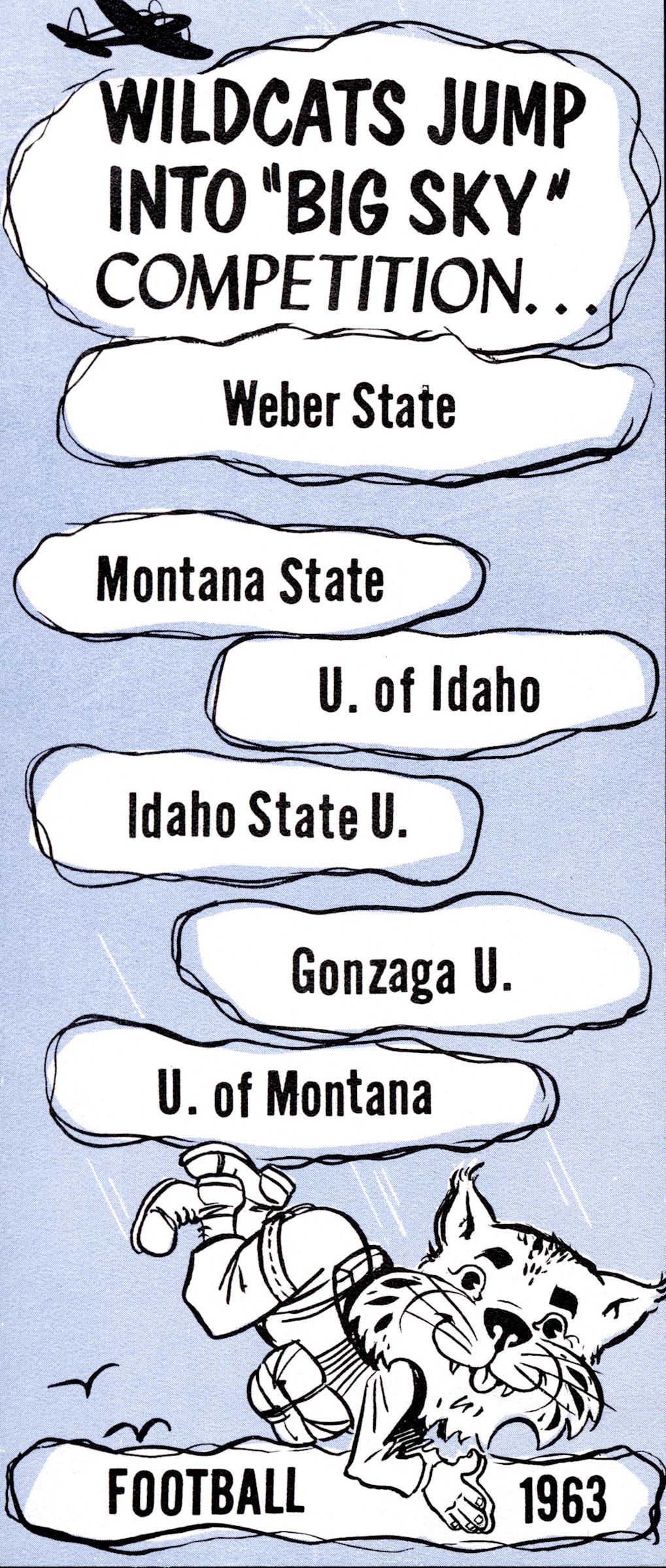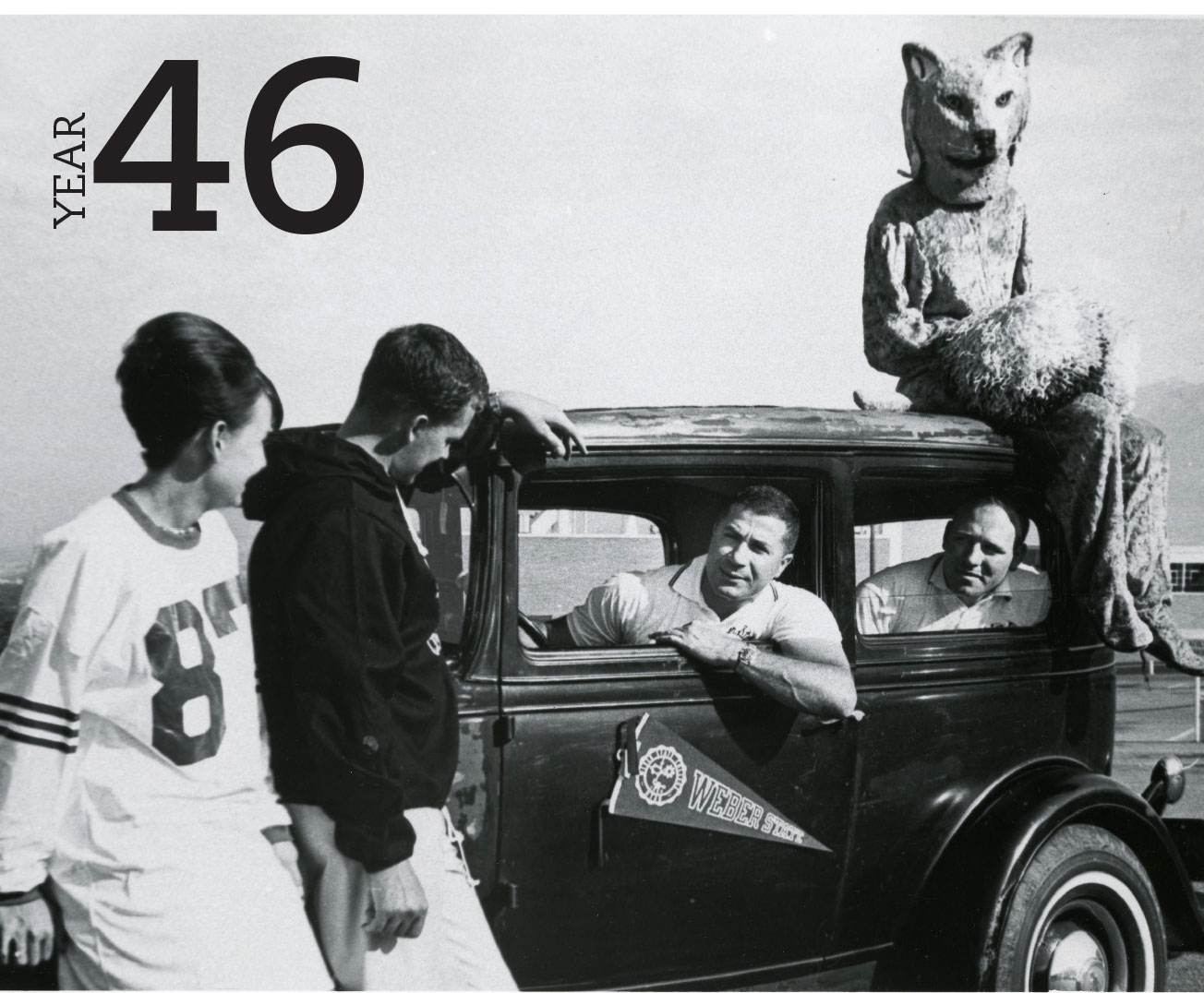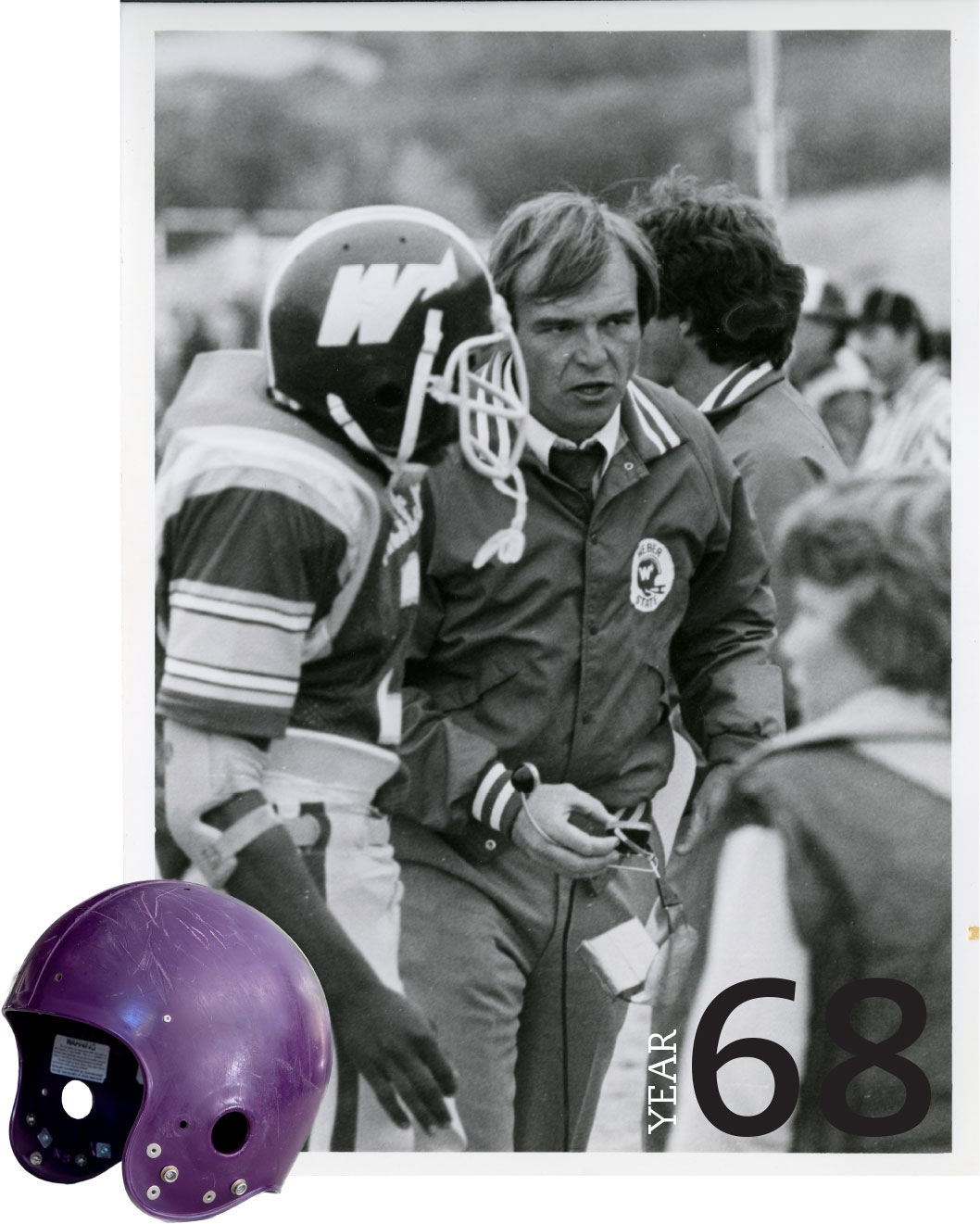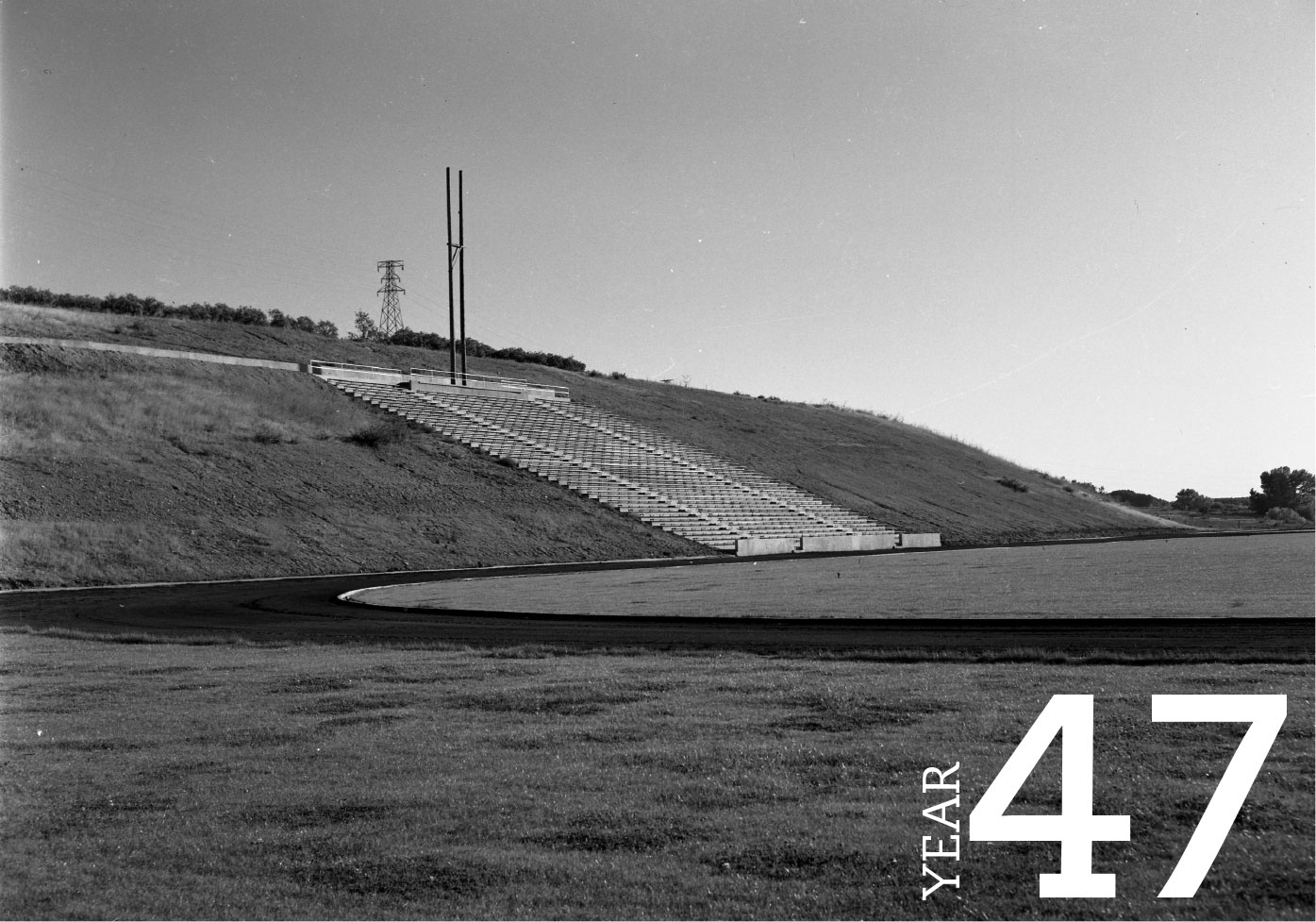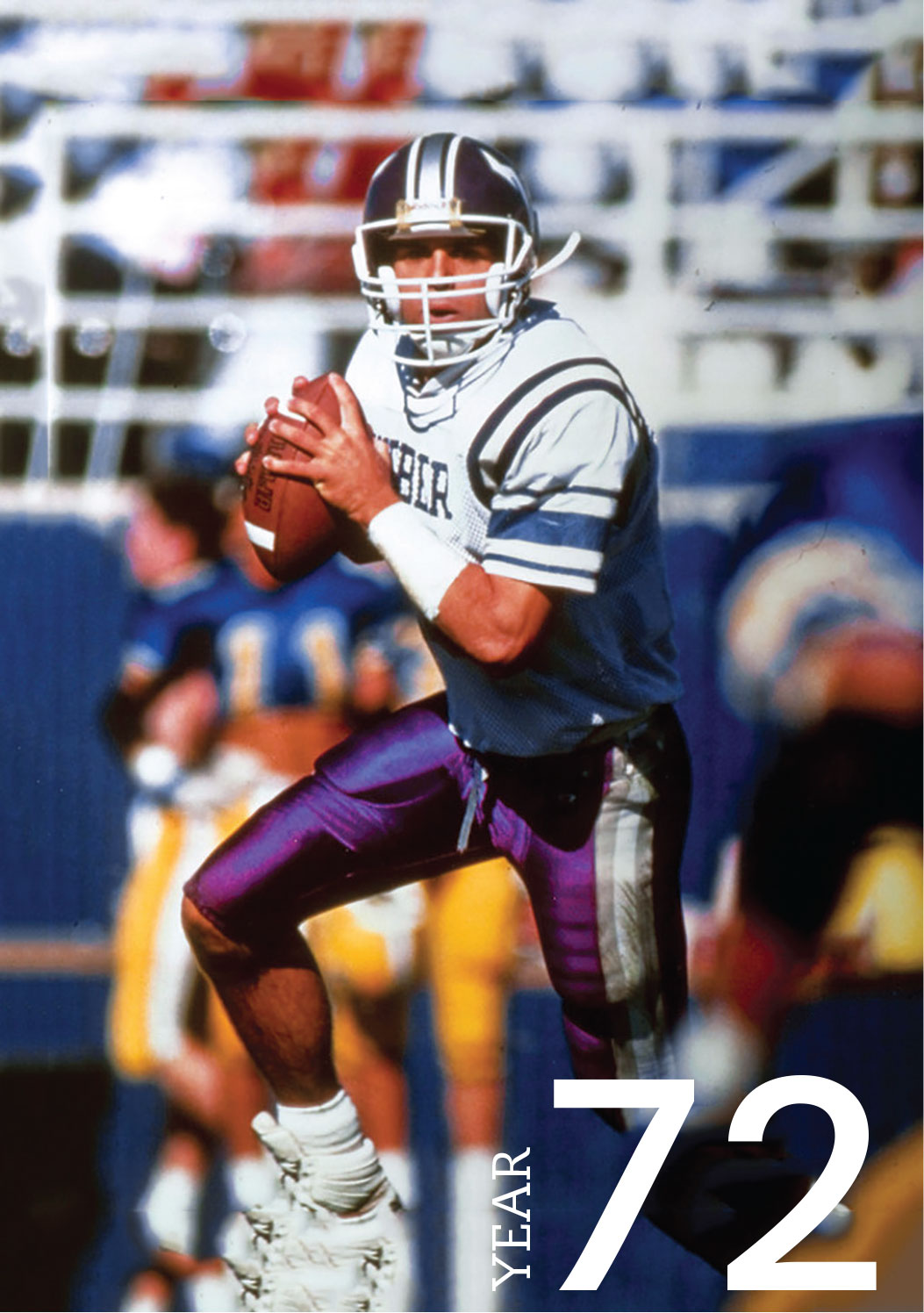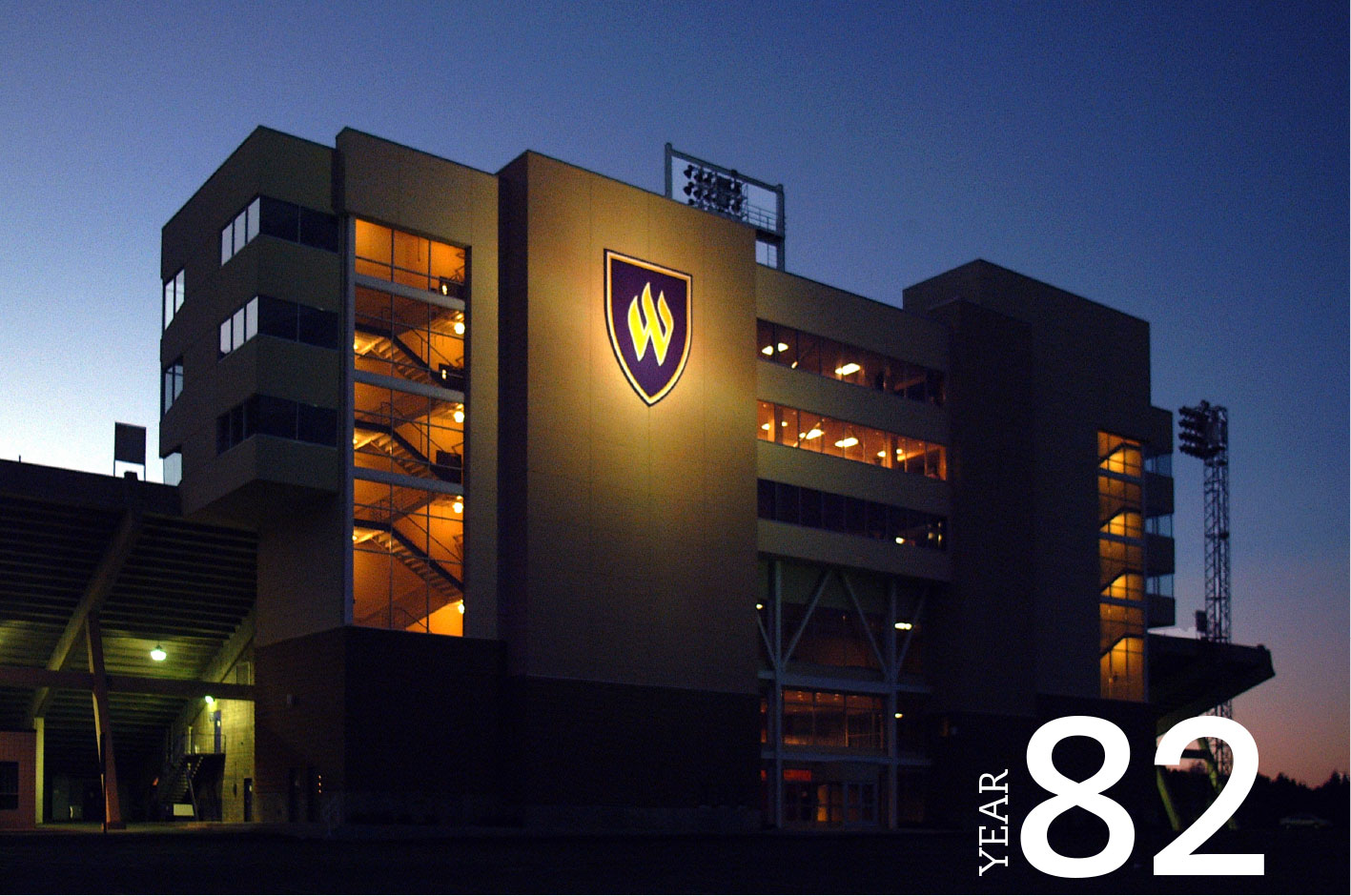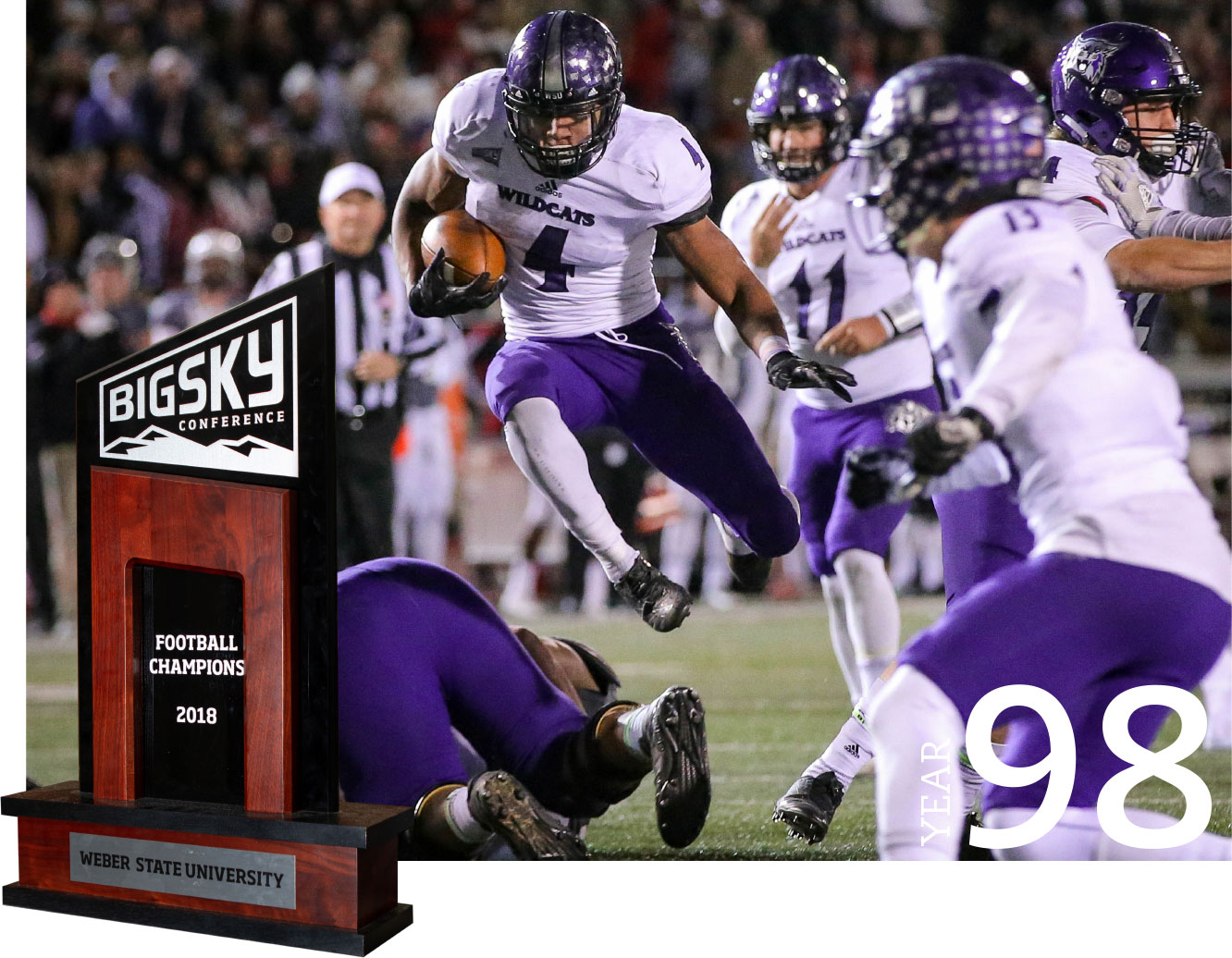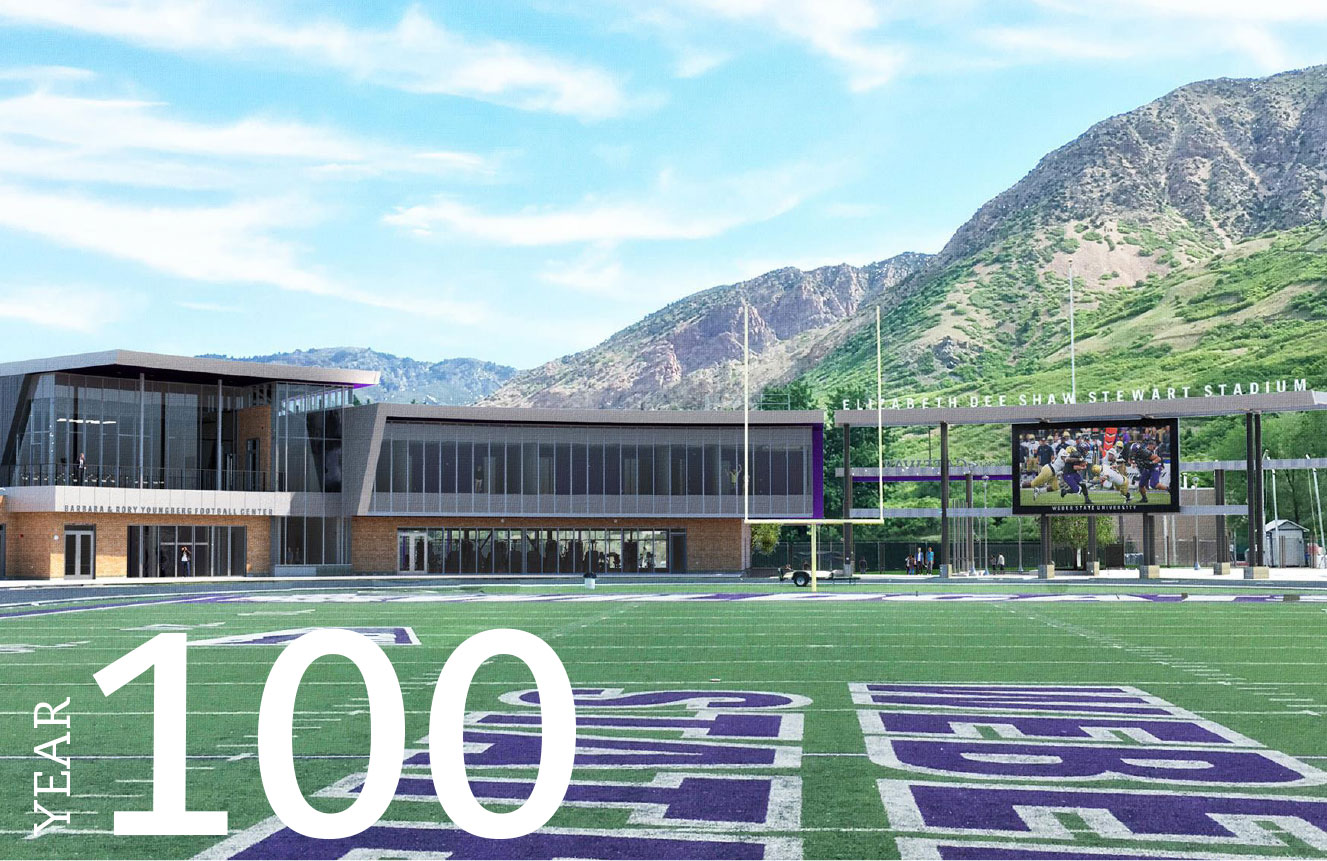Onward and Upward, Fighting Wildcats!
Celebrating 100 years of football at WSU
Matt Gerrish BS ’10, MPC ’15 Marketing & Communications
It started in August 1919.
The Church of Jesus Christ of Latter-day Saints adopted a policy permitting football teams to be organized at church schools. At the time, Weber Normal College was owned and operated by the church and was in its final few years as a high school of 820 students. In September 1919, Weber Normal College athletics coach Malcolm Watson announced that the school would field a team that fall. But there was a lot to be learned, on both the part of the coach and the players, and it had to be learned quickly — the first game was scheduled for Oct. 8, 1919.
Richard Sadler, retired WSU history professor and dean of the College of Social & Behavioral Sciences, recounted those hurried months before Weber’s first football game in his book Weber State College: A Centennial History. He wrote, “Watson had been the coach of Weber’s athletic teams during the past five years and now would add football to the sports he coached. Watson spent the summer of 1919 ‘studying the science of football’ and also spent some time in Salt Lake City with Tommy Fitzpatrick, the football coach at the University of Utah to learn the rudiments of the game.”
The football team boasted 27 student-athletes, with Joe Brewer as captain. The players — they wouldn’t be called Wildcats until 1928 — traveled 20 miles north to Box Elder High School on that historic autumn day in October, hoping to kick off the program with a win.
They lost 20-0.
One month later, Weber Normal College earned its first victory over Davis High School. Sadler provided more details: “During this first football season, Weber played eight games, six in Ogden and two away. The away games were played at Brigham City and Granite High School. Weber won two games, defeating Davis High School and LDS High School, and lost games to Box Elder, Brigham Young College, the American Legion, Ogden High School and Granite High School. Weber played its football games on a dirt playing field at Glenwood Park (later known as Lorin Farr Park).”
In 100 years, fans have watched the Wildcats evolve from a high school team that played games on a small grass field in a local park to a collegiate national-title contender that plays in a 16,500-seat stadium that boasts, hands-down, one of the most beautiful views in northern Utah. The history is packed with great achievements, heartbreaking moments and phenomenal heroics.
Join us as we take a look back.
1924: After transitioning to a junior college, Weber was primarily known as a “football” school, especially during the interwar years, winning eight straight Intermountain Conferences beginning in 1924, when the team earned a 33-0 victory over Phoenix Junior College in the Western States Championship.
1925: Star player Wallace Morris was nicknamed “Wildcat” Morris, inspiring a local sportswriter to refer to the football team as “scrappy as a bunch of Wildcats.” The name stuck, and the team became the Wildcats.
1942: Halfway through the season, Weber College — along with many other programs around the country — was forced to abandon the football program as a result of World War II.
1946: Football returned as a sport with the end of World War II.
1953: After decades of playing home games at Lorin Farr Park, the Wildcats benefited from the school’s move to Harrison Boulevard, where Wildcat Stadium offered wooden bleachers that seated 3,800 fans.
1963: With Weber having changed its status to a four-year institution in 1962, the Wildcats joined the Big Sky Conference in 1963 after playing one year as an independent.
1965: Guided by coach Sark Arslanian, the Wildcats won a share of their first Big Sky championship in 1965, and would eventually win it again three years later. The success and camaraderie of Arslanian’s teams (1965-1972) led his players to self identify as “Sark’s Boys.
1966: In an effort to accommodate more fans, Wildcat Stadium was expanded with the construction of the west grandstand, nearly doubling its capacity.
1987: The Wildcats ended their 19-year drought in which the program had only three winning records in conference play, as Mike Price’s squad went 7-1 in Big Sky play to win the college’s first conference title in almost two decades. These Wildcats were also the first in school history to compete in the Division I-AA (now known as the FCS) playoffs, finishing the season ranked No. 9 in the nation.
1991: Weber State quarterback Jamie Martin set a new standard in Wildcat record books, shattering various school and conference passing records en route to winning the Walter Payton Award, honoring him as the nation’s top Division 1-AA player.
1998: After more than 40 years of use, Wildcat Stadium was renamed to Elizabeth Dee Shaw Stewart Stadium.
2001: Stewart Stadium was upgraded with a 38,000-square-foot Sky Suites & Press Box complex, growing the stadium’s capacity to 16,500 fans.
2008: After another long conference title drought, Ron McBride’s team defied preseason expectations to win a share of the 2008 Big Sky crown with a 7-1 record, earning the Wildcats a trip to the FCS Playoffs, where Weber State advanced to the quarterfinals.
2017 and 2018: For the first time in school history, the Wildcats won back-to-back Big Sky championships, led by coach Jay Hill. Weber State earned its first ever home playoff win in the 2017 campaign, finishing the season ranked No. 5 in the country, the highest in school history. The 2018 season saw the Wildcats finish No. 6 in the nation after another FCS quarterfinals appearance.
2019: Weber State football celebrated its 100th anniversary by opening its latest expansion of Stewart Stadium. The 27,000-square foot north end zone expansion includes the Barbara and Rory Youngberg Football Center, the Sark’s Boys Gateway, the Stromberg Strength and Conditioning Complex, the Marquardt-Kimball Plaza and the Behnken Plaza. Former players and coaches are invited to celebrate 100 years of Wildcat football as part of the Sept. 28 game against Northern Iowa.
For more information, visit weberstatesports.com.




